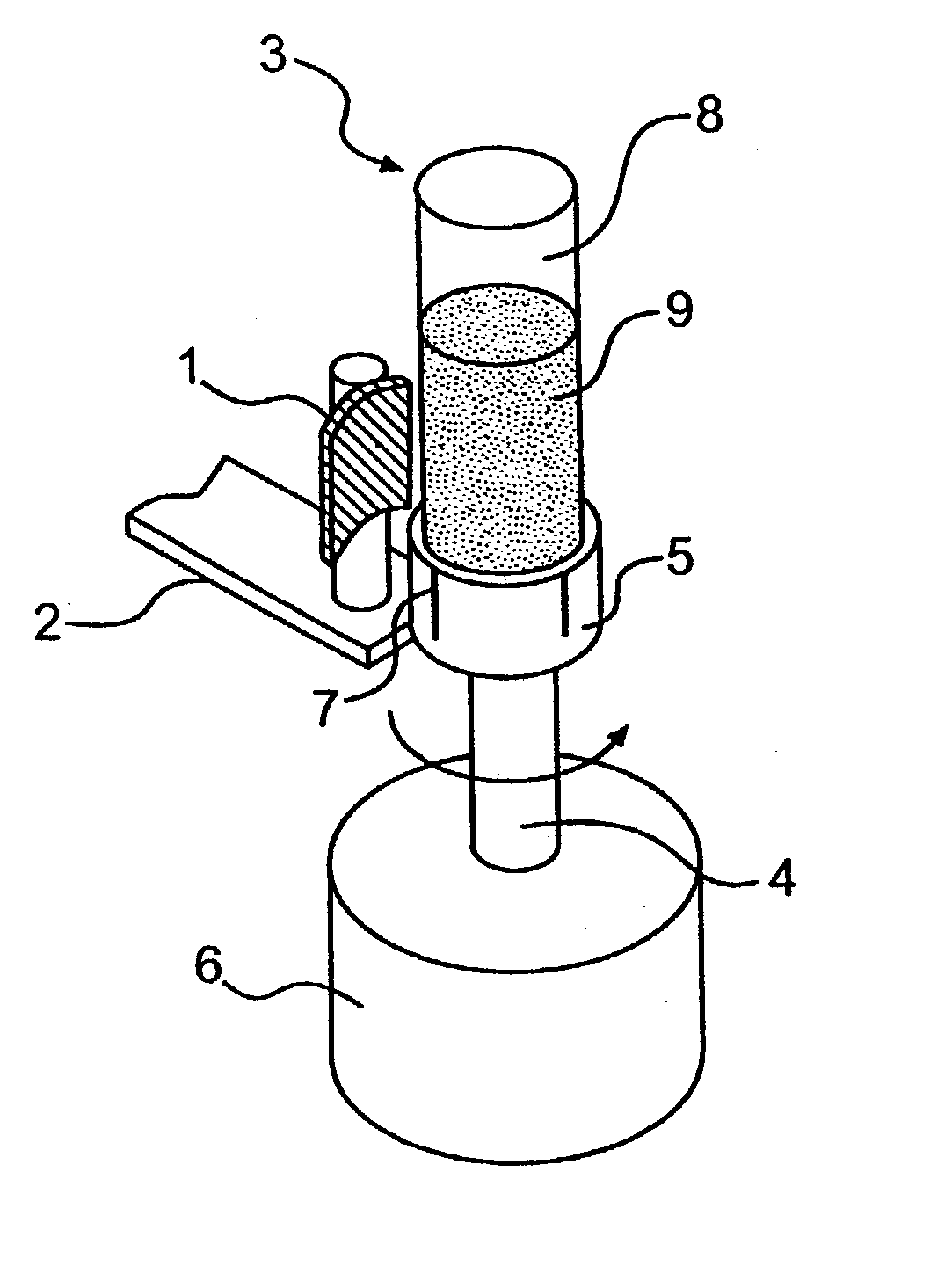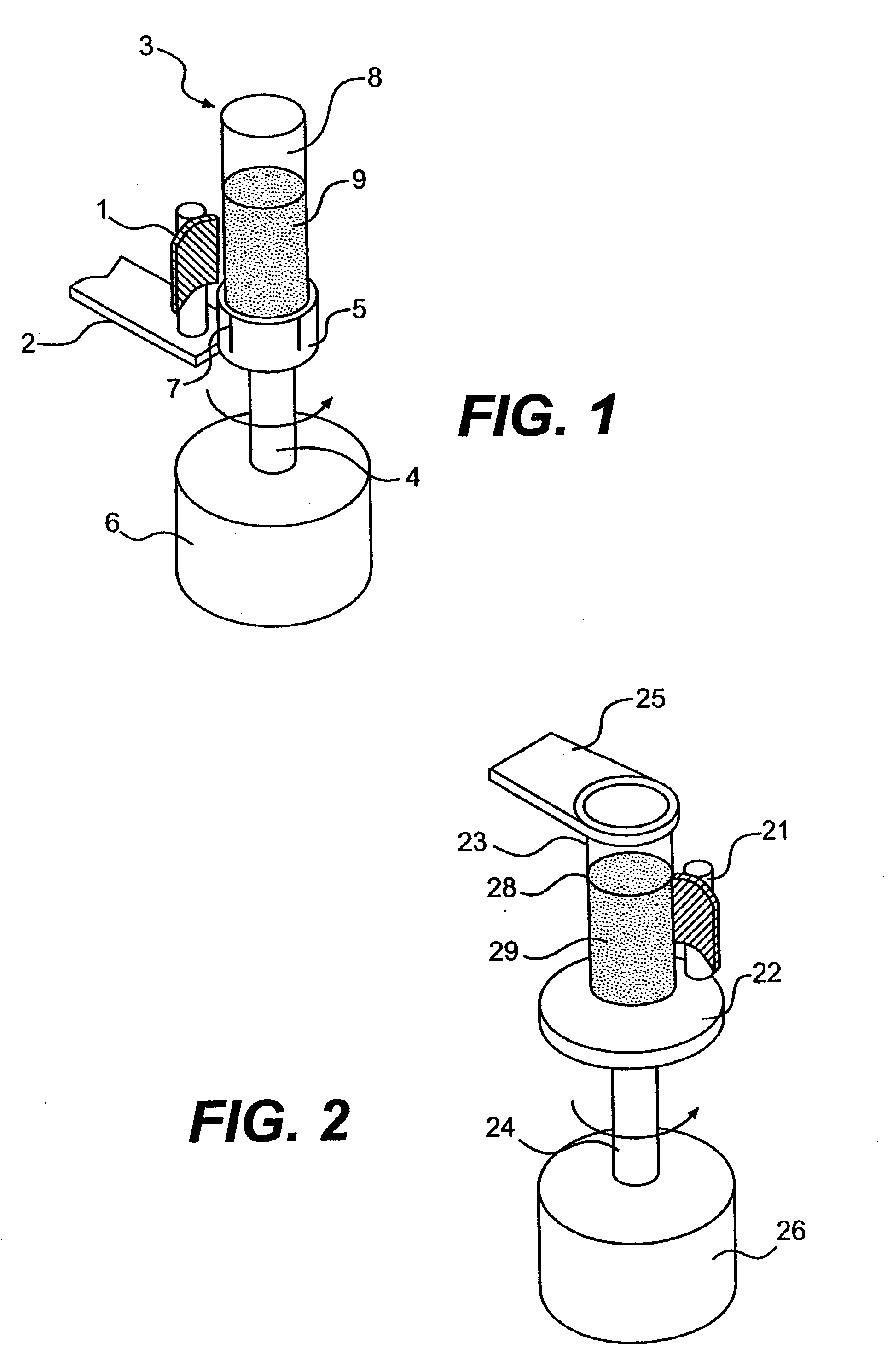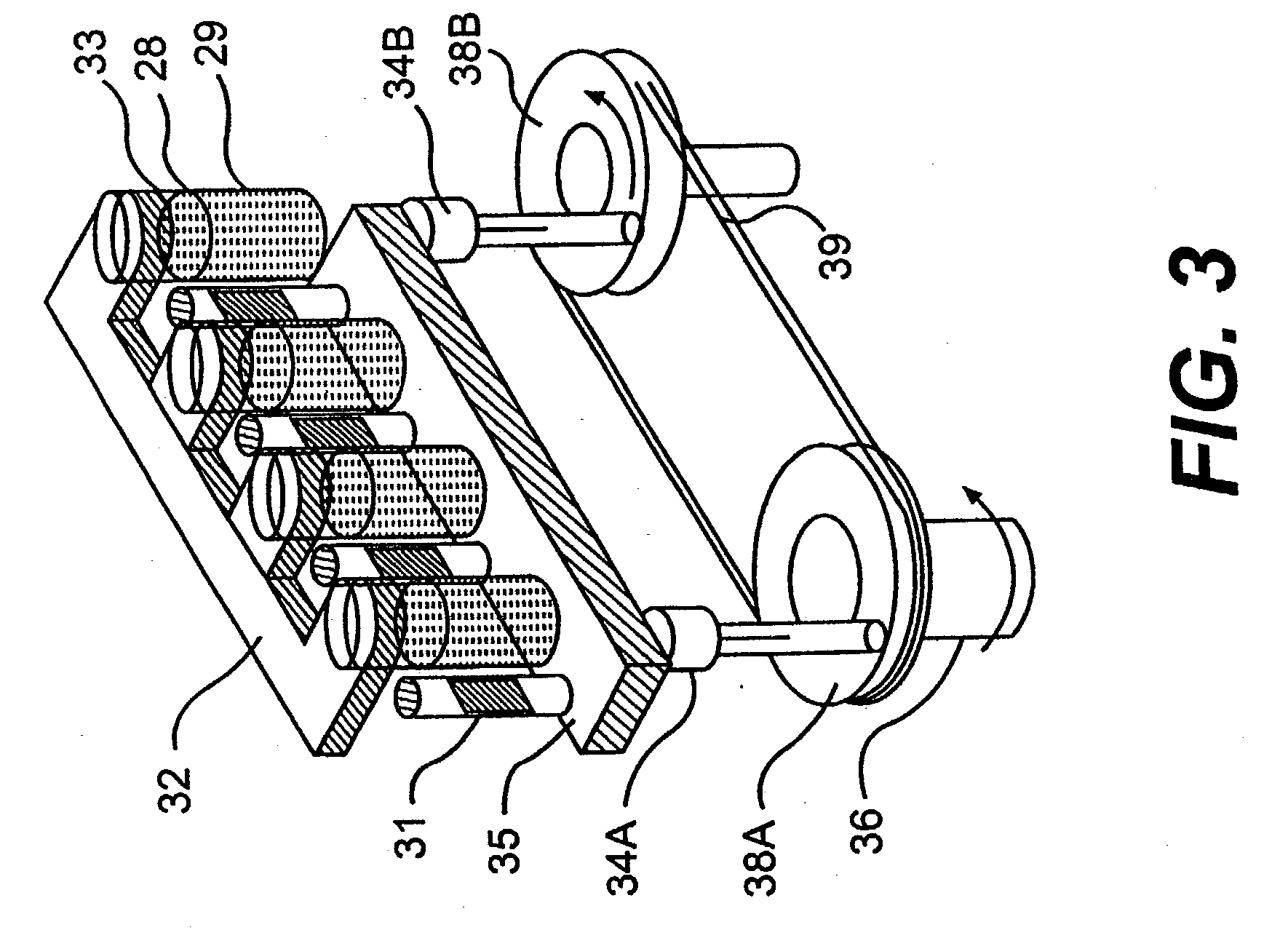Apparatus and method for processing magnetic particles
a magnetic particle and apparatus technology, applied in the field of apparatus and method for processing magnetic particles, can solve the problems of excessive turbulence, affecting the operation of operators, and requiring significant intervention from the operator, and affecting the stability of the magnetic particl
- Summary
- Abstract
- Description
- Claims
- Application Information
AI Technical Summary
Benefits of technology
Problems solved by technology
Method used
Image
Examples
example 1
[0155] The effect of angular acceleration on magnetic particle mixing was determined by using a device similar to the apparatus shown in FIG. 12 except that the linear drive mechanism for vertical movement of the magnet assembly was switched off. The magnet assembly included six rare earth type (NdFeB) permanent magnets of about 35 MGOe. The electric motor (FIG. 12, 129) was a two phase stepping motor driven by a computer programmable controller-driver. The rotary motion of the stepper motor responds to sequence of digital pulses from the controller-driver. The angular acceleration is directly related to the frequency of input pulses and the length of rotation is directly related to number of pulses applied. A 1.6 ml microcentrifuge tube having diameter of about 10.6 mm was used as a container. A 250 .mu.l suspension of about 50 million paramagnetic beads in phosphate buffer saline, pH 7.5 containing 2.5% bovine serum albumin was transferred to a microcentrifuge tube. The beads were...
example 2
[0157] The effect of angular acceleration on purification efficiency was determined by isolating genomic DNA from human whole blood. The basic experimental set up was as described in Example 1 and angular acceleration of 0.1, 0.21 and 4.19 rads / s2 was used. The experiments consisted of three identical isolations using EDTA anticoagulated blood and magnetic beads from Dynabeads DNA Direct kit (commercially available from Dynal, Inc., Lake Success, N.Y. 11042). The process of DNA isolation in this kit relies upon cell lysis to release the DNA, which is then adsorbed at the surface of the beads. It was assumed that mixing efficiency would be directly reflected by comparing the yields of DNA isolated at the three angular acceleration. A 200 .mu.l suspension of beads from the kit was pipetted in a siliconized microcentrifuge tube. The microcentrifuge tube was then placed in the tube holder of the apparatus and the magnetic field acting inside of the tube was adjusted by the knob (FIG. 12...
PUM
| Property | Measurement | Unit |
|---|---|---|
| Fraction | aaaaa | aaaaa |
| Angular velocity | aaaaa | aaaaa |
| Angular velocity | aaaaa | aaaaa |
Abstract
Description
Claims
Application Information
 Login to View More
Login to View More - R&D
- Intellectual Property
- Life Sciences
- Materials
- Tech Scout
- Unparalleled Data Quality
- Higher Quality Content
- 60% Fewer Hallucinations
Browse by: Latest US Patents, China's latest patents, Technical Efficacy Thesaurus, Application Domain, Technology Topic, Popular Technical Reports.
© 2025 PatSnap. All rights reserved.Legal|Privacy policy|Modern Slavery Act Transparency Statement|Sitemap|About US| Contact US: help@patsnap.com



